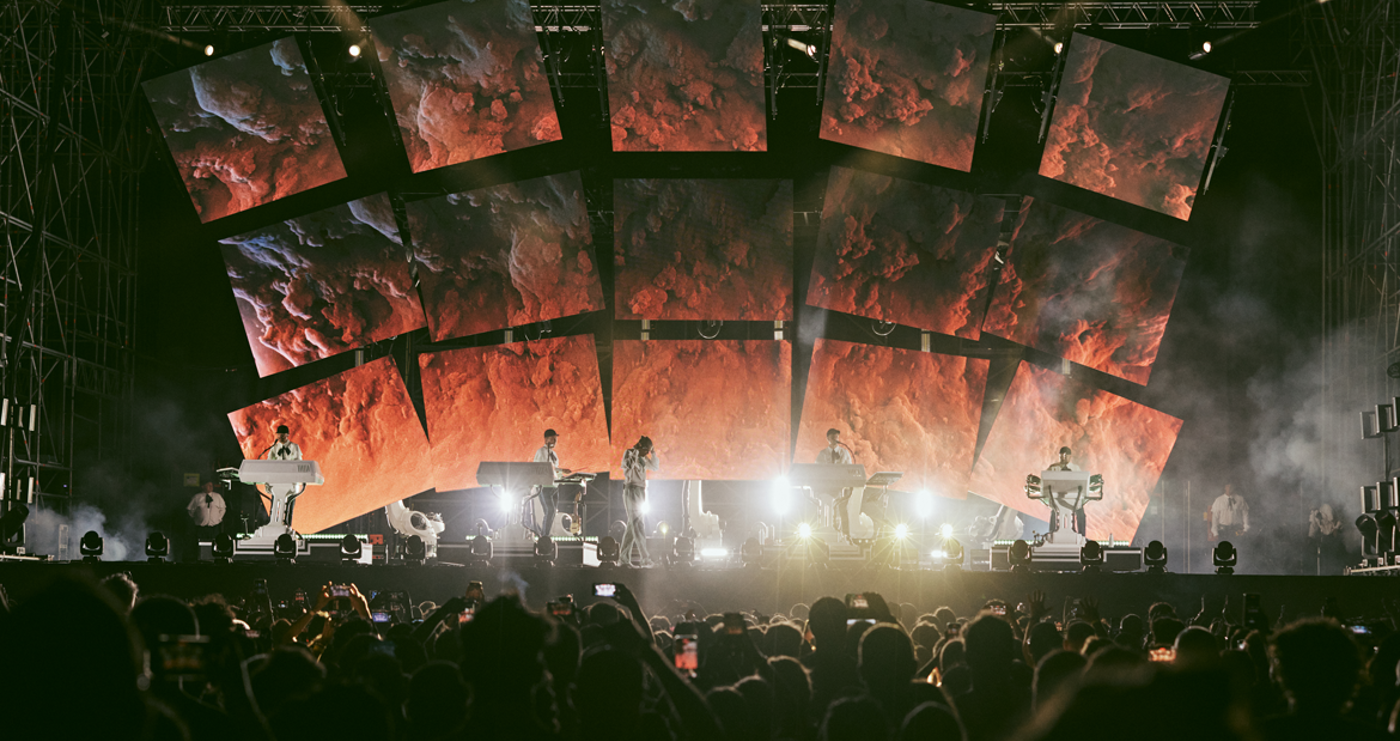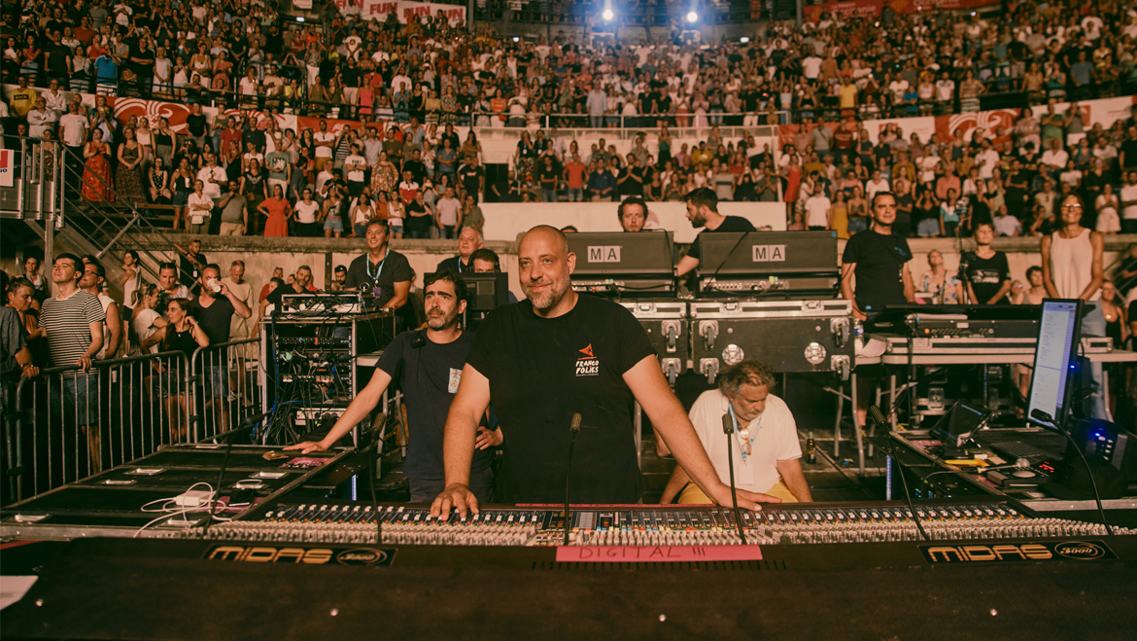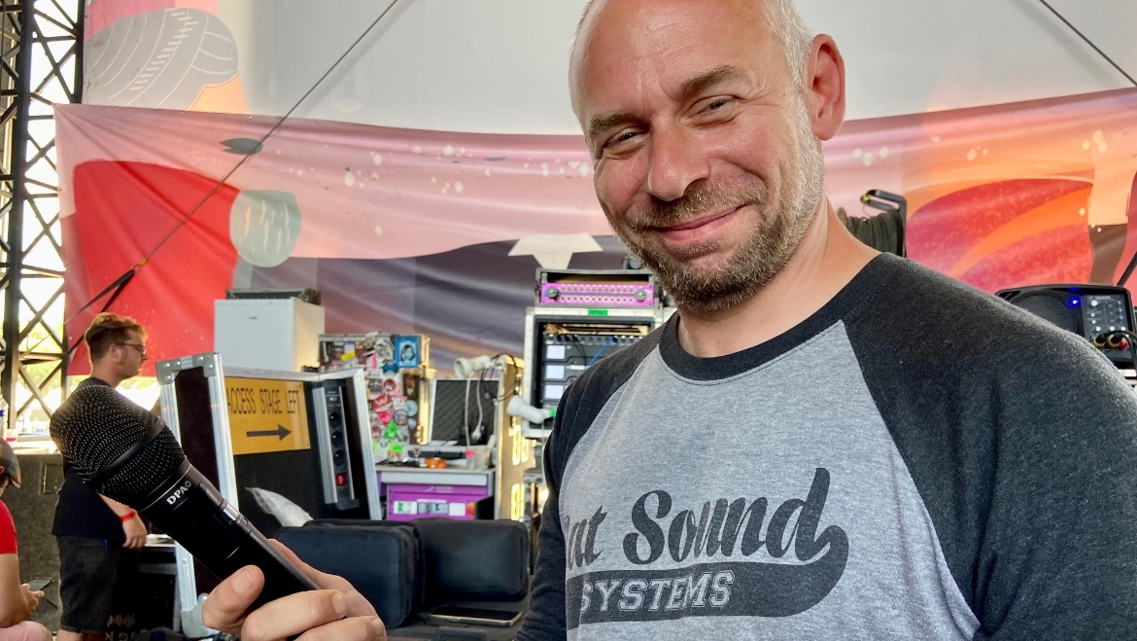Known for his unique blend of hip-hop and electronic music, Belgian Singer, Rapper, Songwriter and Producer Stromae entertains audiences with his distinctive sound and riveting live shows. For audio support of his performances, which are often acapella, Stromae entrusts Sound Engineer Lionel Capouillez and Monitor Engineer Johan Milet to capture the natural timbre of his voice, without interference from competing sounds. For that authentic audio, Capouillez and Milet rely on DPA Microphones’ 4018V d:facto Handheld Vocal Microphone.
“A monitor engineer I knew suggested I try the d:facto a while back,” says Milet. “At the time, I was working with Canadian Singer Véronique Dicaire, who was the opening act for Céline Dion. Véronique and I were both delighted with the result of the d:facto, and since then, I have had a tendency to recommend this microphone.”
When it came time to mic Stromae’s tour, Capouillez was immediately on-board with the d:facto. “What initially captured us most about this mic is its linear frequency response,” he explains. “We didn’t want something that colors the audio too much or had too many high frequencies.”
Frequency was a big issue that Capouillez and Milet encountered with previous mics for Stromae’s unique performances. “To give you an idea of the show,” Capouillez says, “Stromae does an acapella performance where he puts the microphone in the center of him and his five musicians, which then also means the audio is competing with the sound of 10-15 thousand people in the audience. When I used the d:facto, it was the first time I was able to take the audio to a point I had never taken it before, and it sounded great.”
Beyond correcting for an acapella performance, Milet also notes that the soundscape of each venue proved challenging at times. “We have risers on stage, so to avoid a lot of cable runs we switched to wireless signals across the stage. It was a good challenge to have, but now that we don’t have any audio cables, you have to be very attentive to what’s happening on stage. There is sound pollution and background noise, but with the DPAs, we manage it very well. Plus, the humidity has less of an effect on the d:facto, which is great for touring.”
To overcome these challenges, Capouillez and Milet rely on a number of audio solutions to ensure a smooth-running show. “I mix on a DiGiCo SD7 Quantum,” Milet starts. “We use Shure for the HF links, as well as the PSM1000 and Axiente Digital Wireless Microphone System to manage noise interferences. For the outboard, it’s a Bricasti and a Waves rack.”
Capouillez’s setup varies a bit depending on the setting. “I used an SD7 for Coachella, but I normally mix on a Midas H3000 because I like analog a lot,” he adds. “We use dbx 160A and dbx 160SL compressors for microphones, and we also have the TC Electronic M3000 dual-engine reverb, M-One dual-effects processor and D-Two multi-tap rhythm delay. On the master system, I have a 31-band Klark Technik motorized controller that goes through an Avalon VT-747 compressor/equalizer and ultimately into an SSL Fusion analog master processor.”
Whether they’re on tour or in the studio, the duo keeps DPA microphones close at-hand for their workflow. “For touring, the Charango, Rototoms and strings are all picked up with the DPA 4099 Instrument mics,” Milet continues. “We have also done recordings using the DPA 4006 and 4011 pencil mics. One studio I recently worked with did a lot of drum recordings using DPAs as overheads; it was really great. I can’t wait to get some of my own DPA mics soon.”
Capouillez and Milet look forward to their continued use of the d:facto. “It works really well compared to what we had before,” Milet notes. “We have a clearer, more crystalline sound. And, we do not lose treble with the d:facto, which is another big advantage.”
Capouillez agrees, adding, “Frankly, it’s only happiness here. The d:facto works like a charm!”




